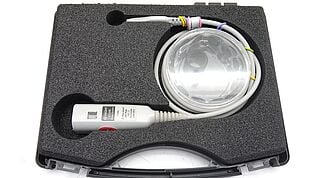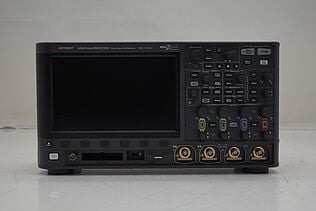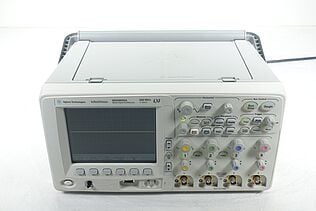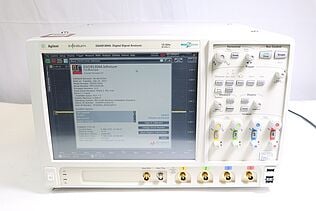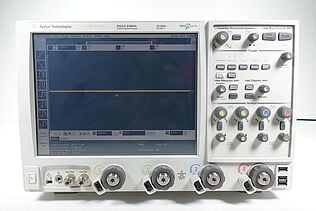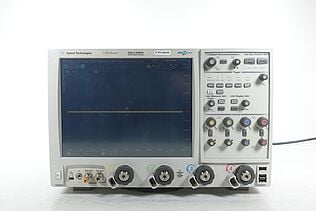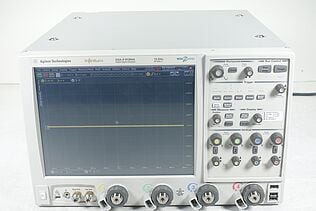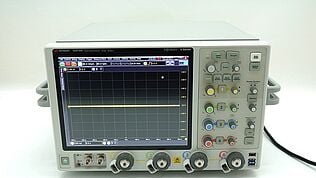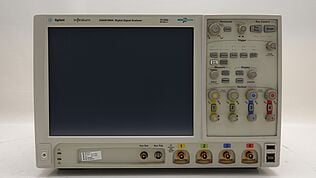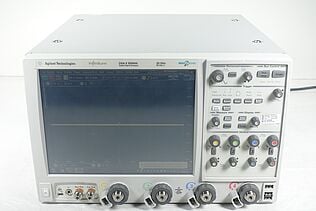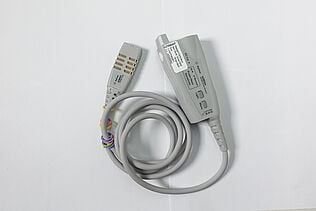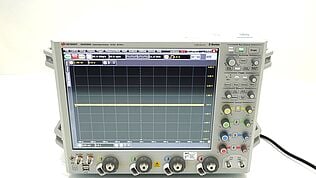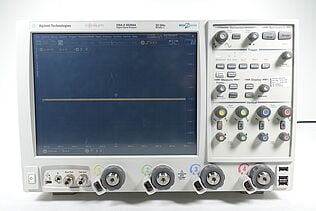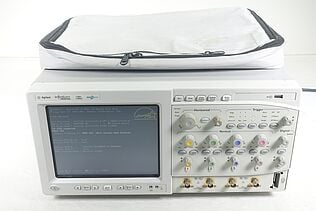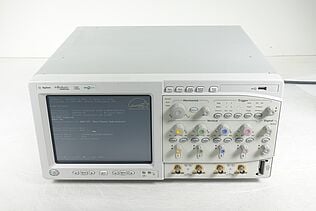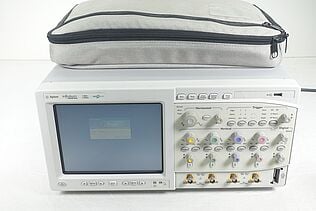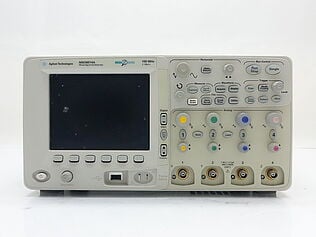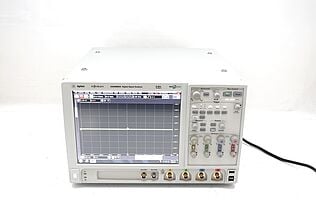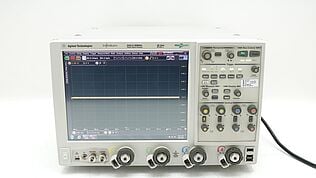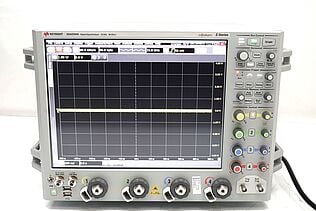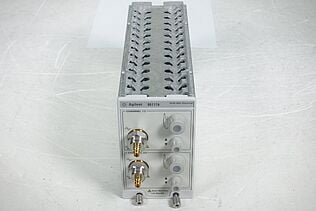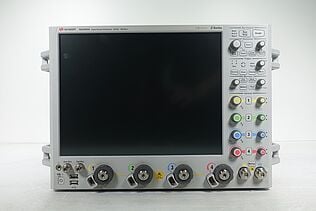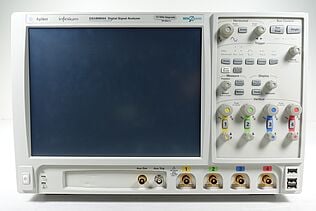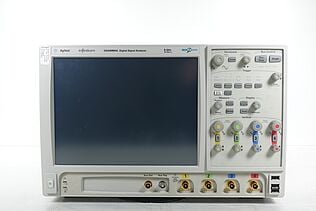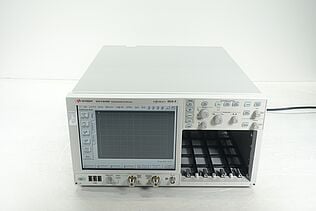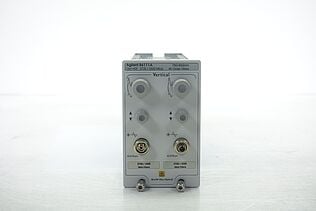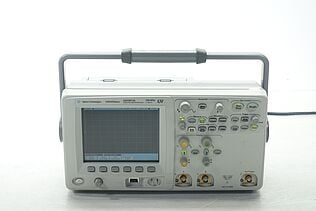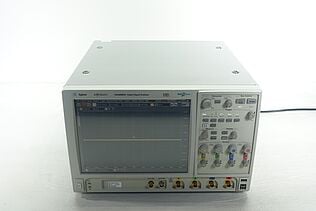- Introduction
- Understanding the Basics of RLC Circuits
- The Components of an RLC Circuit
- Working of an RLC Circuit
- Types of RLC Circuits
- Series RLC Circuit
- Parallel RLC Circuit
- Series-Parallel RLC Circuits
- Key Characteristics of an RLC Circuit
- Testing and Analysis of RLC Circuits
- Get the Right Equipment To Test Your RLC Circuit
- RLC Circuit Application
- Oscillators
- Band-Pass Filters
- Power Supplies
- Conclusion
- Whenever You’re Ready, Here Are 5 Ways We Can Help You
- Browse Our Latest Deals of Used Oscilloscopes
Did you know that the fundamental principles of RLC circuits were first described by the brilliant scientist James Clerk Maxwell in the 19th century? The same principles are at the core of many of our modern devices today, from the smartphone in your pocket to the satellites orbiting our planet.
RLC circuits are fundamental components of electrical engineering and can exhibit complex behavior such as resonance, damping, and the characteristic response of the circuit to different input signals. As indispensable as they are intricate, RLC circuits provide the foundation for understanding complex systems in electrical engineering and many other related fields.
Buy Oscilloscopes at a Great Discount
Understanding the Basics of RLC Circuits
A RLC circuit (Resistor-Inductor-Capacitor Circuit), also known as a tuned or resonant circuit, is an electric circuit composed of resistors (R), inductors (L), and capacitors (C). It's a powerful tool that allows us to describe and predict how circuits will respond to various inputs.
These circuits are commonly used in electronics for various purposes, such as radio technology and audio/video signal processing. They can be classified as series or parallel.
| Key Takeaway |
|---|
| RLC circuits, composed of resistors, inductors, and capacitors, are the fundamental building blocks of many electrical and electronic systems. Their ability to resonate at specific frequencies and dampen oscillations makes them an indispensable tool in diverse applications ranging from tuning circuits and oscillators to band-pass filters and power supplies. |
The Components of an RLC Circuit
- Resistors (R): Resistors limit current flow and drop voltage in a circuit. They exhibit a constant resistance regardless of the frequency of an applied signal. This constant resistance is crucial for the balance of the RLC circuit.
- Inductors (L): Inductors store energy in the form of a magnetic field when current passes through them. They oppose changes in current, with the degree of opposition dependent on the frequency. The higher the frequency, the higher the inductive reactance, which is the resistance provided by an inductor to alternating current (AC).
- Capacitors (C): Capacitors store energy in an electric field and oppose changes in voltage. Like inductors, capacitors also have a reactance, called capacitive reactance, which decreases with increasing frequency.
Working of an RLC Circuit
An RLC circuit responds to a wide range of signals, whether steady DC, simple AC, or complex waveforms. This response depends on how the energy flows and oscillates between the inductor and the capacitor, with the resistor acting as a mediator that controls this oscillation by dissipating energy.
Types of RLC Circuits
When we discuss RLC circuits, we typically distinguish between two primary types: series and parallel configurations. Both configurations can be used in similar applications, but they have distinct characteristics and responses to input signals that make them better suited for specific applications.
Series RLC Circuit
In a series RLC circuit, the resistor (R), inductor (L), and capacitor (C) are arranged in a single path. The same current flows through each component, while the voltages across each component can vary.
A key feature of a series RLC circuit is that its impedance (the total opposition to current flow) reaches a minimum at resonance. This is because the inductive and capacitive reactance cancel out each other at the resonant frequency. This property is exploited in applications like tuning circuits, where the circuit must pass a specific frequency while blocking others.
Parallel RLC Circuit
In a parallel RLC circuit, the R, L, and C components are all connected across the same voltage source. In this configuration, the voltage across each component is the same, while the current flowing through each component can vary.
Parallel RLC circuits have the unique property of exhibiting maximum impedance at the resonant frequency. This is because the admittance (the inverse of impedance) of the inductor and capacitor cancel out each other at resonance. This makes parallel RLC circuits ideal for use as notch filters to block a specific frequency and allow others to pass.
Series-Parallel RLC Circuits
Beyond the basic series and parallel configurations, there are also series-parallel RLC circuits, where some components are arranged in series while others are arranged in parallel. These circuits are more complex and can be designed to meet specific needs in more advanced applications.
While both series and parallel RLC circuits contain the same basic components, the way they are arranged can have a significant impact on the behavior and applications of the circuit.
Key Characteristics of an RLC Circuit
- Resonance: An RLC circuit exhibits resonance at a specific frequency, known as the resonant frequency. At this point, the inductive reactance equals the capacitive reactance, which results in maximum circuit response to a particular input frequency. Resonance in RLC circuits is a key principle behind the working of many electronic devices, including radios and televisions.
- Damping: Damping is the tendency of an oscillating system, like an RLC circuit, to decrease its oscillations over time. In RLC circuits, the resistor plays a crucial role in damping by dissipating energy.
There are three types of damping:
- Underdamped (slow decay of oscillations)
- Overdamped (oscillations cease quickly)
- Critically damped (oscillations cease in the shortest time without going into oscillation).
| Damping Type | Description |
| Underdamped | Oscillations decay slowly |
| Overdamped | Oscillations cease quickly |
| Critically Damped | Oscillations cease in the shortest time without going into oscillation |
Testing and Analysis of RLC Circuits
For the testing and analysis of RLC circuits, tools such as spectrum/signal analyzers and oscilloscopes are commonly used.
Spectrum Analyzers: Spectrum analyzers measure the magnitude of an input signal versus frequency within a full frequency range of interest. They provide frequency domain information and can be used to observe circuit response at various frequencies, particularly useful when studying resonance and damping.
Oscilloscopes: Oscilloscopes display the change of an electrical signal over time, with voltage and time as the Y- and X-axes, respectively. This is ideal for time-domain information and is great for viewing the transient or steady-state response of a circuit.
Using these tools, you can derive critical information about the circuit, like resonant frequency, quality factor, damping factor, and more.
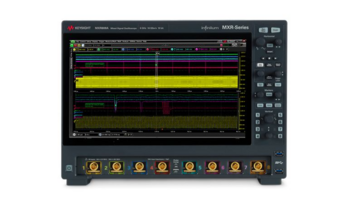
Get the Right Equipment To Test Your RLC Circuit
Select up to 3 instruments to compare
Enable Notifications
In order to use this feature, you need to enable notifications.
Manage notification preferences
RLC Circuit Application
RLC circuits find application in a wide variety of areas.
Oscillators
An oscillator is a device that generates a waveform, such as a sine wave or a square wave. They're a fundamental component of a myriad of electronic devices, including computers, clocks, and radios.
In oscillators, RLC circuits are used to generate oscillations at their resonant frequency. By providing a path for feedback from output to input and using the resonant properties of the RLC circuit, a continuous oscillating signal can be maintained. The quality and stability of the oscillation largely depend on the characteristics of the RLC circuit used.
Band-Pass Filters
A band-pass filter is a device that allows signals within a certain frequency range to pass while attenuating frequencies outside this range. They're widely used in wireless transmitters and receivers, audio electronics, and image processing to name a few areas.
RLC circuits can act as band-pass filters where the resonant frequency determines the center frequency of the passband. The bandwidth, which is the range of frequencies that are passed with minimal attenuation, is influenced by the values of resistance, inductance, and capacitance in the circuit. By carefully selecting these parameters, an RLC circuit can be tailored to pass a desired range of frequencies.
Power Supplies
Power supplies often need to convert alternating current (AC) from the power grid into direct current (DC) for electronic devices. However, the initial conversion process usually leads to a fluctuating or "rippled" DC signal.
This is where RLC circuits come in handy. They can act as smoothing or filter circuits to reduce these ripples and provide a more stable DC output. The RLC circuit accomplishes this by storing and releasing energy in the inductor and capacitor, effectively filling in the gaps in the ripple and creating a smoother signal. The resistance in the circuit determines how quickly the circuit responds to changes, allowing for fine-tuning of the smoothing effect.
Conclusion
RLC circuits, consisting of resistance (R), inductance (L), and capacitance (C), stand as the cornerstone of electrical engineering. With their unique properties like resonance and damping, they regulate the complex world of electronic signals and responses.
The way in which they are set up, either in series or in parallel circuits, greatly affects how they work and can be used in various applications. For example, they can be used to adjust circuits in radios and TVs, to create oscillators, to act as band-pass filters, and to stabilize the power supply.
Understanding RLC circuits is important for designing, analyzing, troubleshooting, and optimizing their performance in larger systems. Hence, these circuits are much more than simple electrical components; they are the lifeblood of many modern electronic and communication systems.
If you're working with RLC circuits and looking for quality testing and measurement equipment, we encourage you to explore Keysight's Used Equipment Store. Keysight provides a wide range of premium used equipment such as spectrum/signal analyzers and oscilloscopes, perfect for testing and analyzing your RLC circuits.
Expand your capabilities and ensure precision in your work with Keysight's premium used test equipment solutions.

Whenever You’re Ready, Here Are 5 Ways We Can Help You
- Browse our Premium Used Oscilloscopes.
- Call tech support US: +1 800 829-4444
Press #, then 2. Hours: 7 am – 5 pm MT, Mon– Fri - Talk to our sales support team by clicking the icon (bottom right corner) on every offer page
- Create an account to get price alerts and access to exclusive waitlists.
- Talk to your account manager about your specific needs.

Subscribe to Get Our Latest News, Updates, and Articles.
Browse Our Latest Deals of Used Oscilloscopes
Select up to 3 instruments to compare
Enable Notifications
In order to use this feature, you need to enable notifications.
Manage notification preferences
